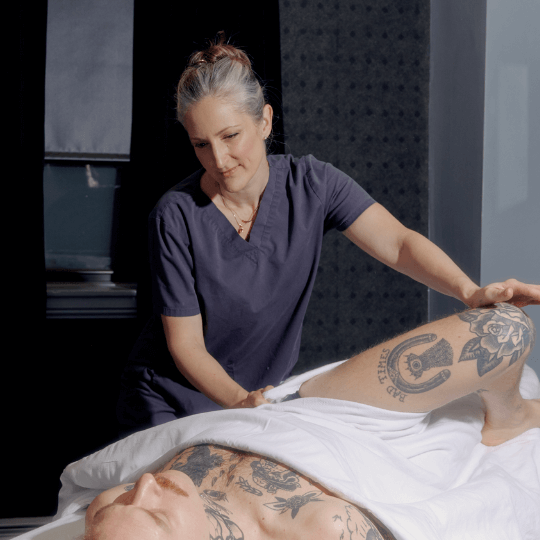By Ivan Garay LMT/CPT
Strength training can improve a cyclist’s performance and protect against injuries. Research on endurance athletes shows that strength training improves the three most important predictors of endurance sports performance[1]: economy (the ability to do a certain amount of work using as small amount of energy as possible), velocity/power at maximal oxygen uptake (How fast you can pedal on your endurance races), and velocity at maximal anaerobic running threshold (How fast you can sprint before burning out at top speed).
When designing a strength training program, you must first focus on correcting any imbalances in posture and movement patterns. The prolonged bent over position on the bicycle and miles of pedaling create common muscle imbalances in cyclist. They include tight/shortened muscles, the calves, psoas, quadriceps, hamstrings, lumbar spine, pectorals, upper trapezius, and neck flexor muscles. Along with these shortened muscles,there are weak/lengthened muscles, the tibialis anterior, gluteus maximus, abdominals, rhomboids, middle and lower trapezius, and neck extensor muscles.
Below is a sample routine that will balance muscles and improve cyclers posture:
First release tight muscles with foam rolling or active stretching:
Calves, psoas, quadriceps, hamstrings, lumbar spine, pectorals, upper trapezius, neck flexor muscles.
Follow by strengthening the weak muscles with resistance exercise:
- Ankle Dorsiflexion with Cable or Tube Resistance
- Barbell or Dumbbell Deadlift
- Bridges
- Dumbbell Rows with Shoulder Blades Squeezed (this exercises will reduce middle and upper back pain and soreness from long rides)
- Neck Extension in a Quadruped Position (It will reduce neck pain from prolonged forward head position)
- Planks
- Side Planks
Brace your abdominals with every exercise. To perform an abdominal brace, pull your bellybutton toward your spine, tighten your abs without moving your body (as if you were about to be punched in the stomach).
Perform each exercise for 2 sets of 12-20 repetitions for muscular endurance.
Current research recommends that to increase cycling performance heavy strength training at maximal velocity[2] should be performed with multiple leg exercises for periods of greater than 6 weeks [3]. During a cycler’s off-season, high volume strength training should be performed two to three times a week and each exercise should be done for two to three sets for four to ten repetitions. You should rest two to three minutes between sets. Maximal results usually occur after an 8-12 week cycle of training. During competitive season your training volume should be reduced to 1 session a week with a lower volume of exercises but with the same high intensity to maintain strength gained from your off-season program[4].
Pick a heavy weight with each exercise and move as fast as you can during the concentric phase (lifting phase) and slow down during the eccentric phase (lowering phase of the exercise).
Off-Season Routine
- One-Legged Squat
- Barbell DeadliftDumbbell lunges
- Standing Calve Raises
- Barbell Rows
- Seated Calve Raises
- Chin-Ups
- Bench Press
- Barbell Shoulder Press
- Dips
- Dumbbell curls
- Back Extensions
- Planks
- Side Planks
Competitive Season Routine
- Barbell Front Squat
- Standing Calve Raises
- Barbell Rows
- Bench Press
- Dips
- Dumbbell Curls
- Planks
[1] http://link.springer.com/article/10.1007/s00421-013-2586-y
See Reference Page for article citation
[2] http://link.springer.com/article/10.1007/s00421-013-2586-y
See Reference Page for article citation
[3] https://www.ncbi.nlm.nih.gov/pubmed/23914932
See Reference Page for Article citation
[4] http://link.springer.com/article/10.1007/s00421-010-1622-4
http://onlinelibrary.wiley.com/doi/10.1111/j.1600-0838.2009.01035.x/abstract;jsessionid=8DA506016E22EA58C549B269A3F70D81.f03t03?deniedAccessCustomisedMessage=&userIsAuthenticated=false
See Reference Page for Article citation

